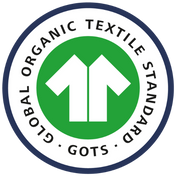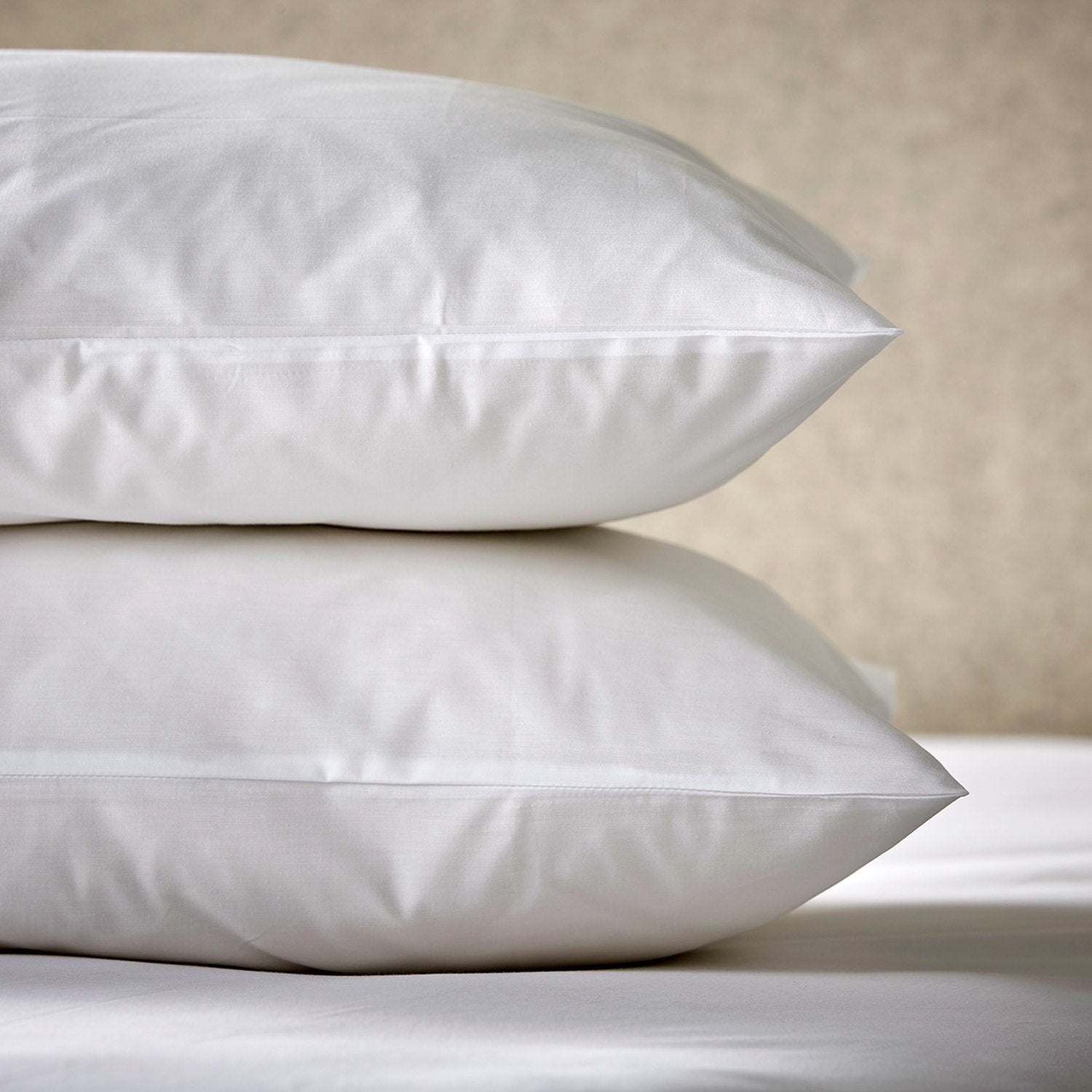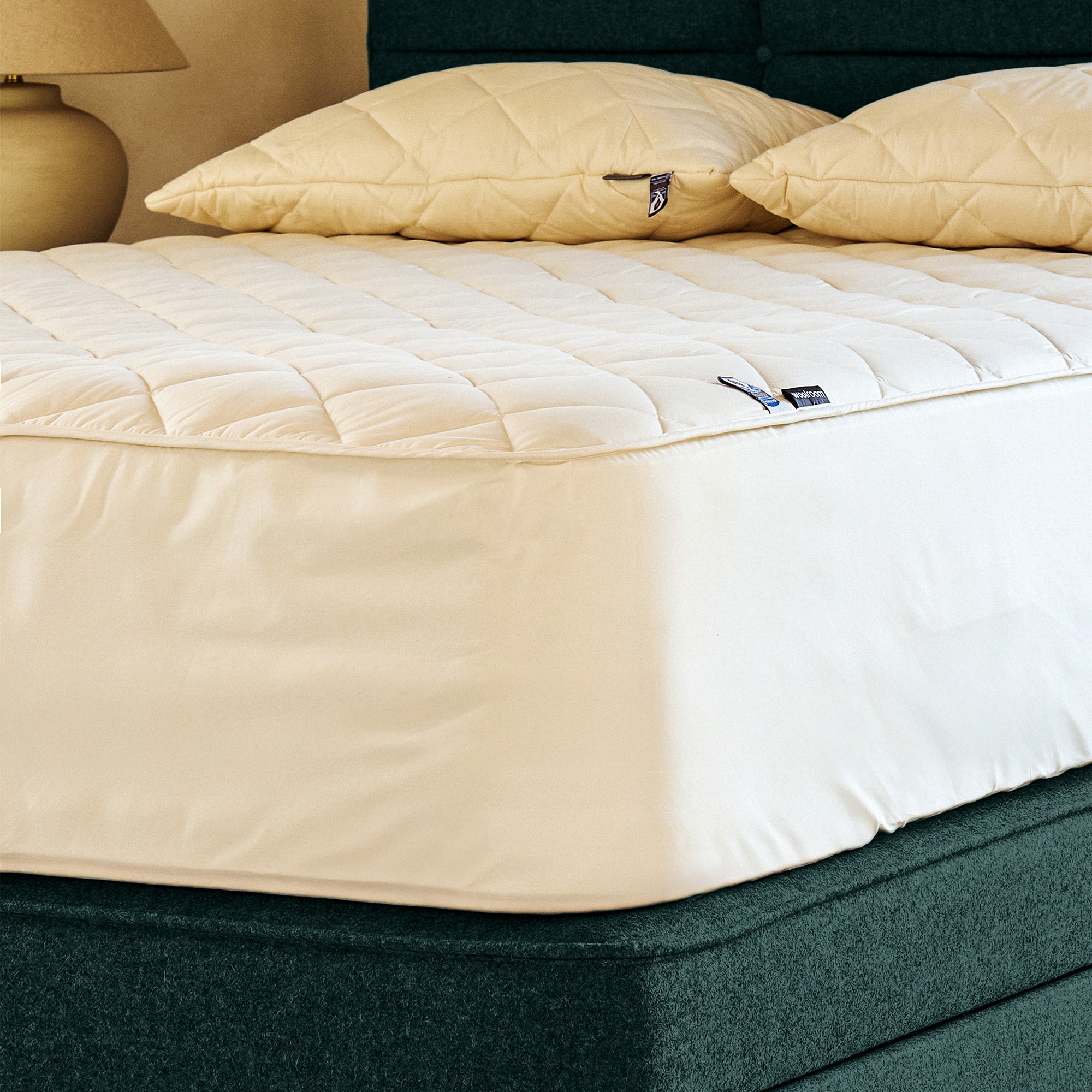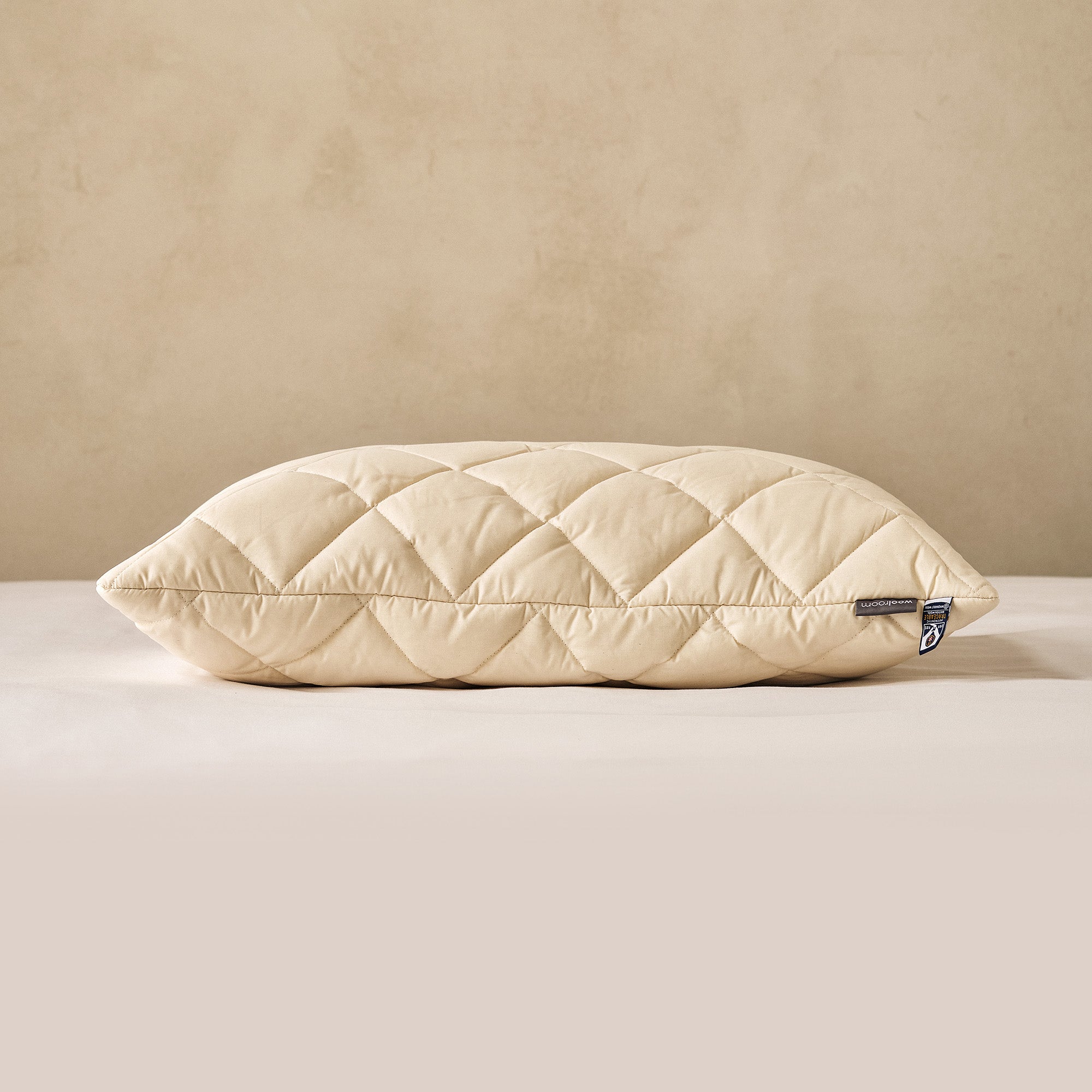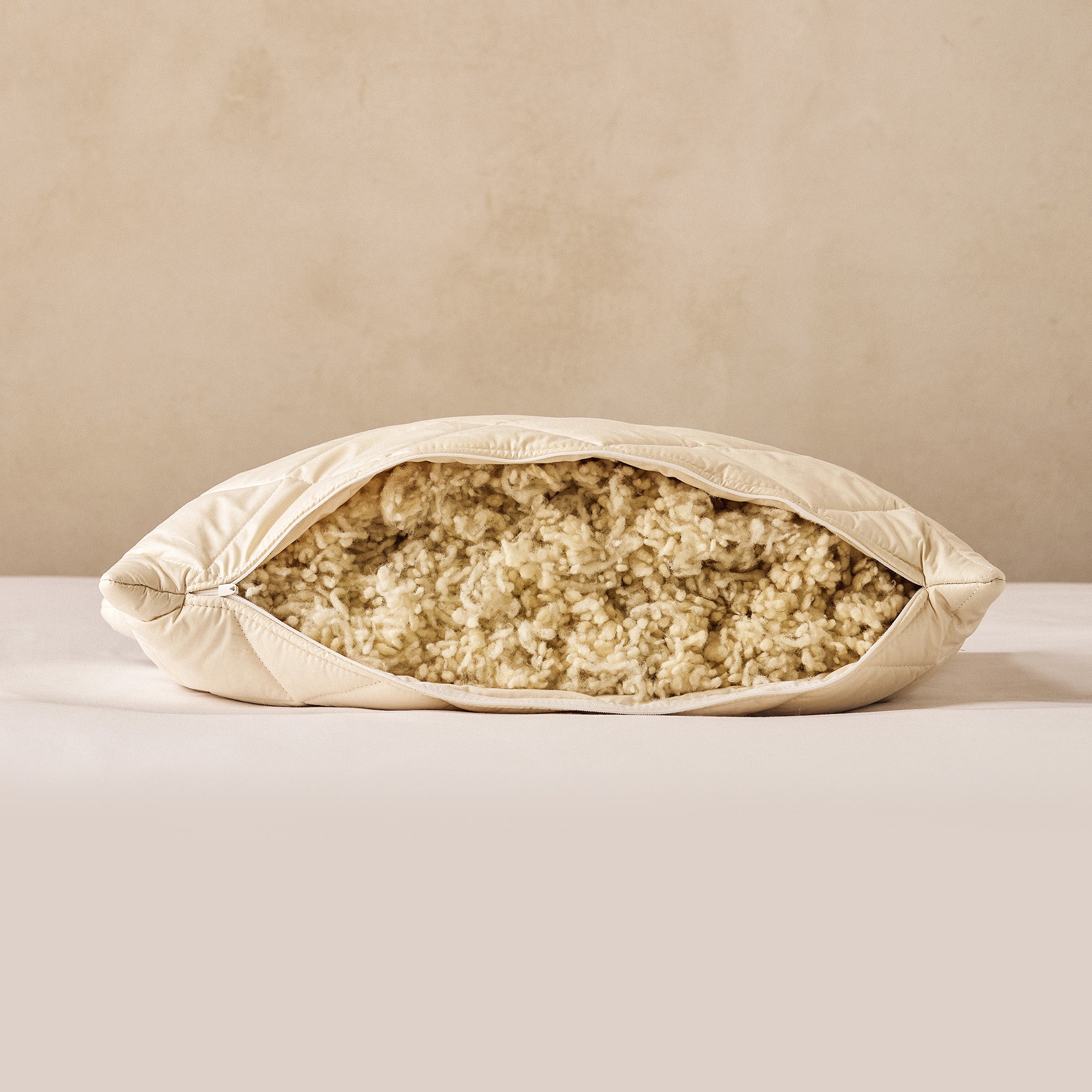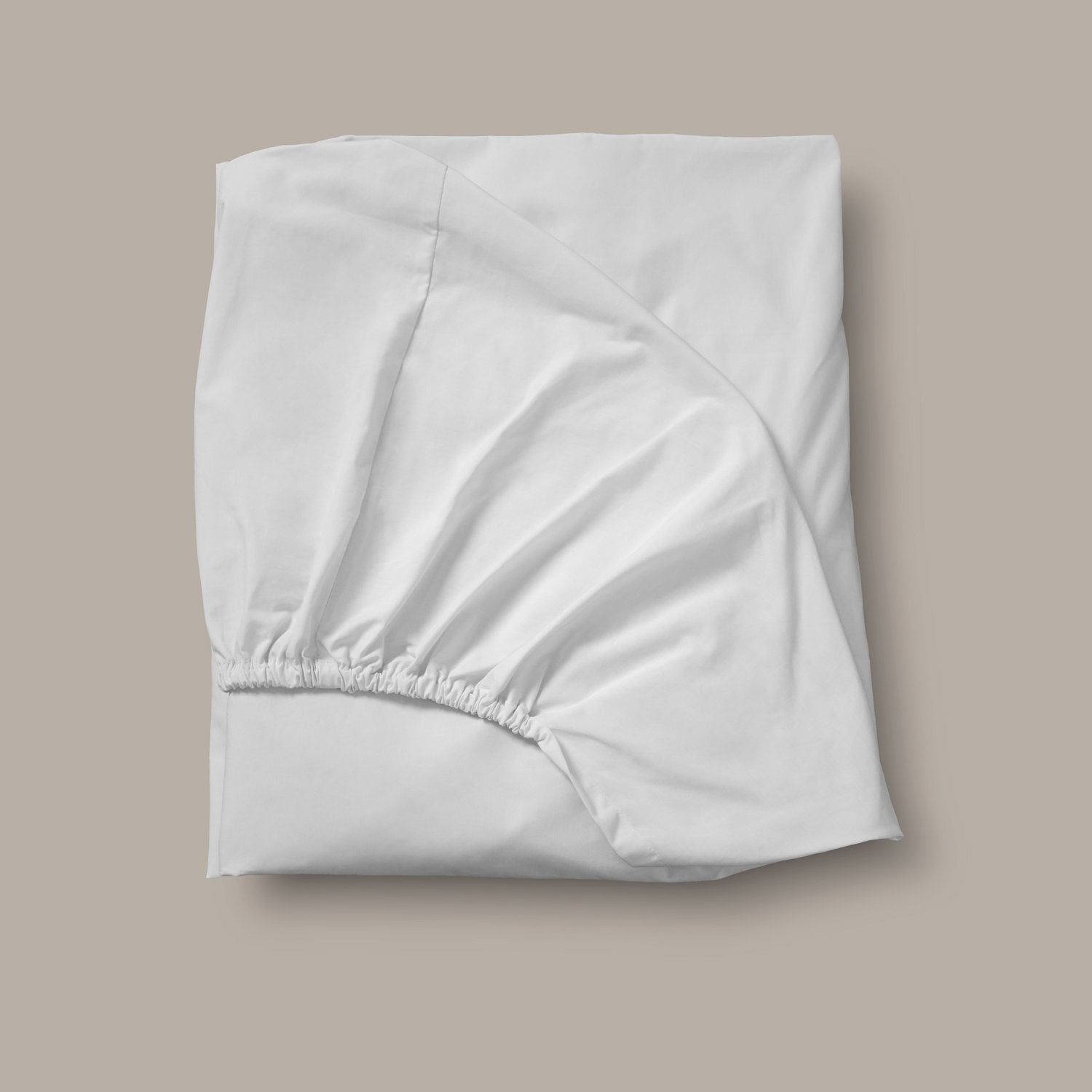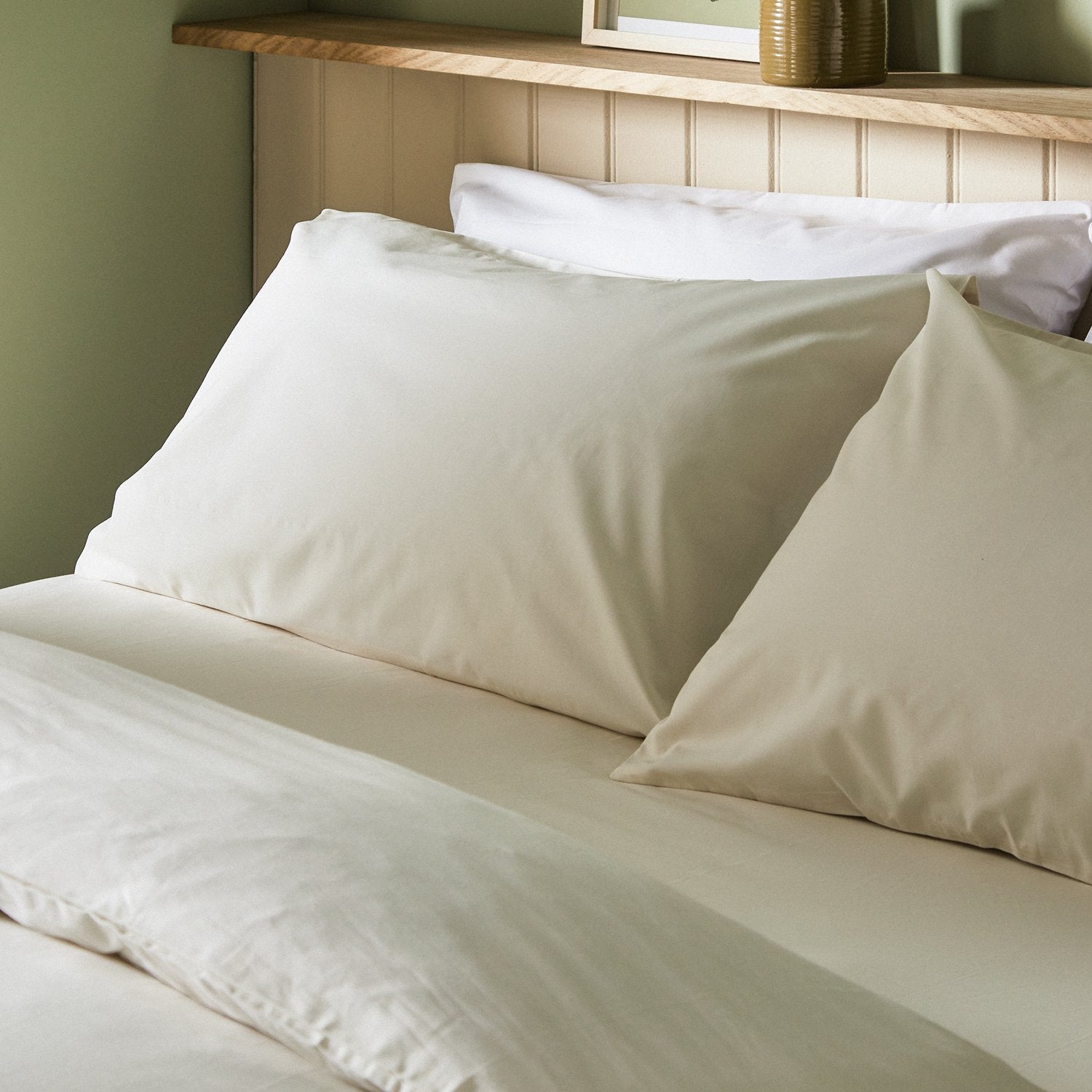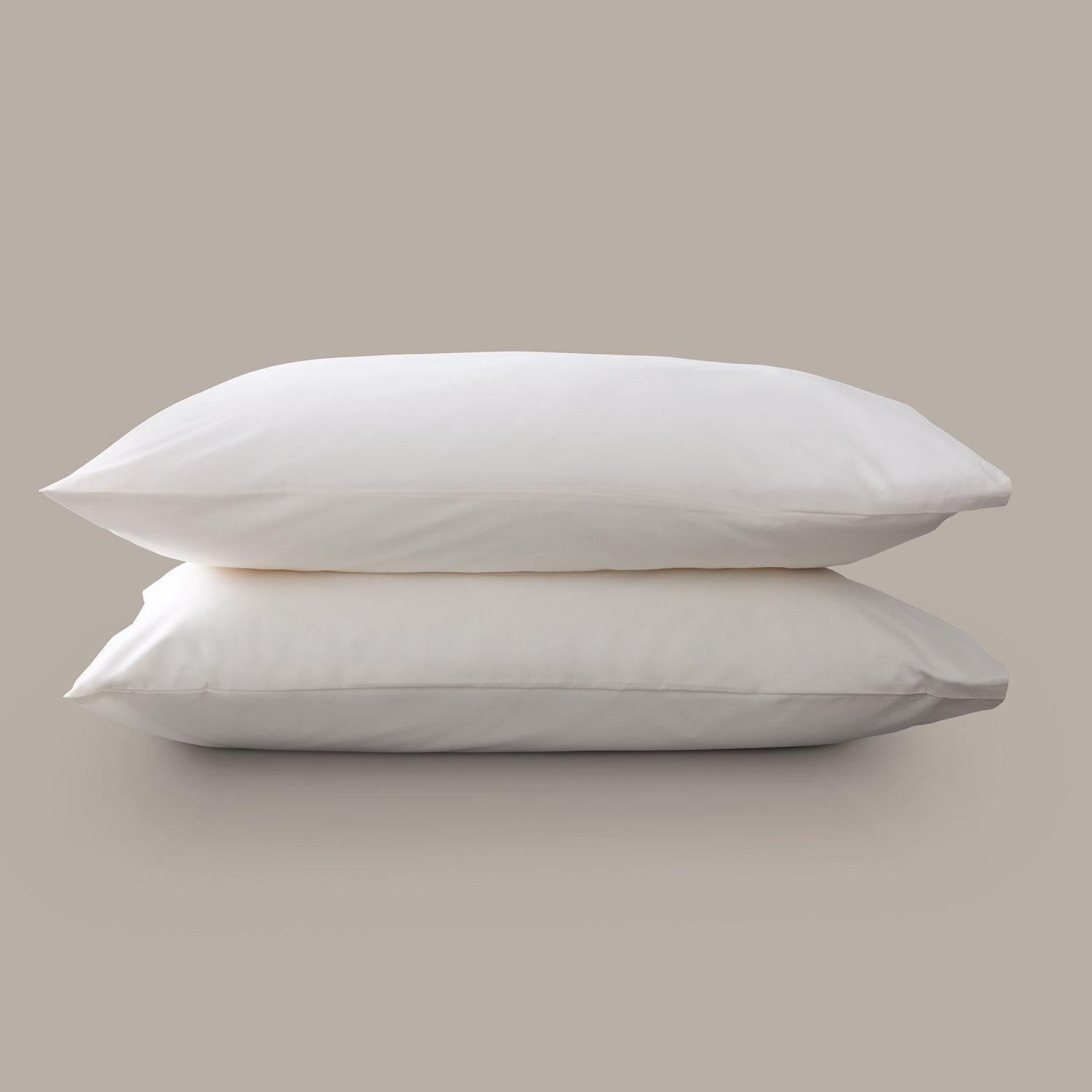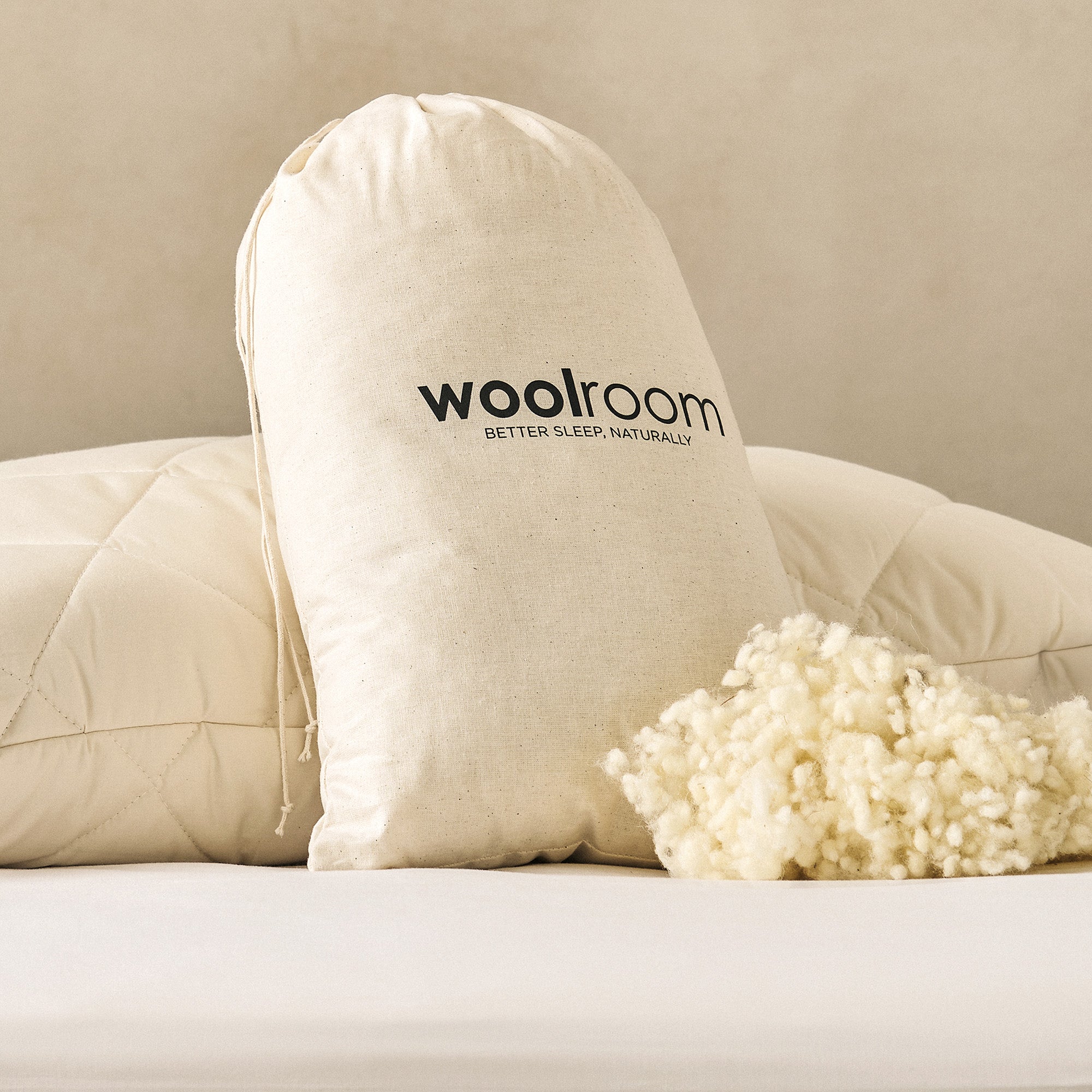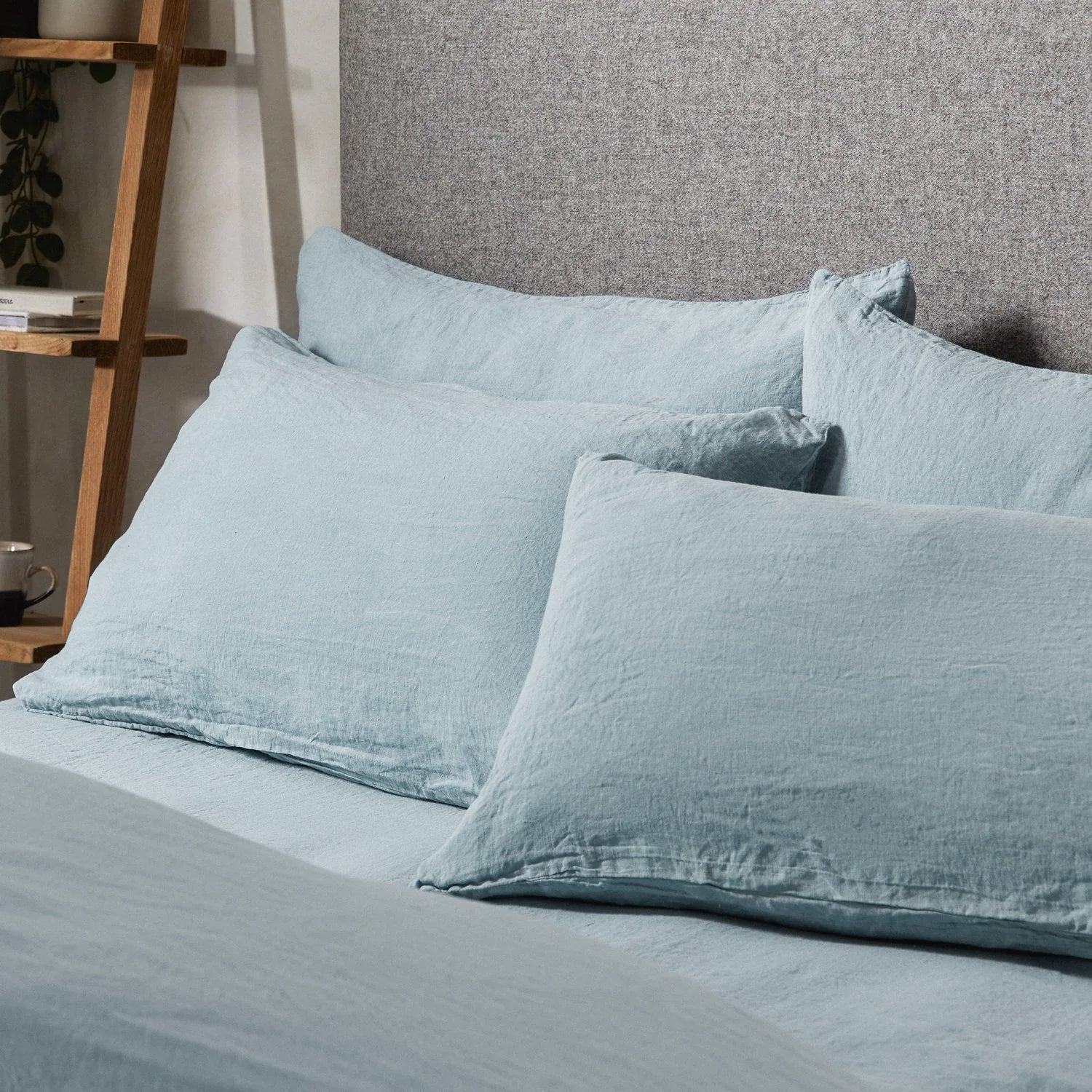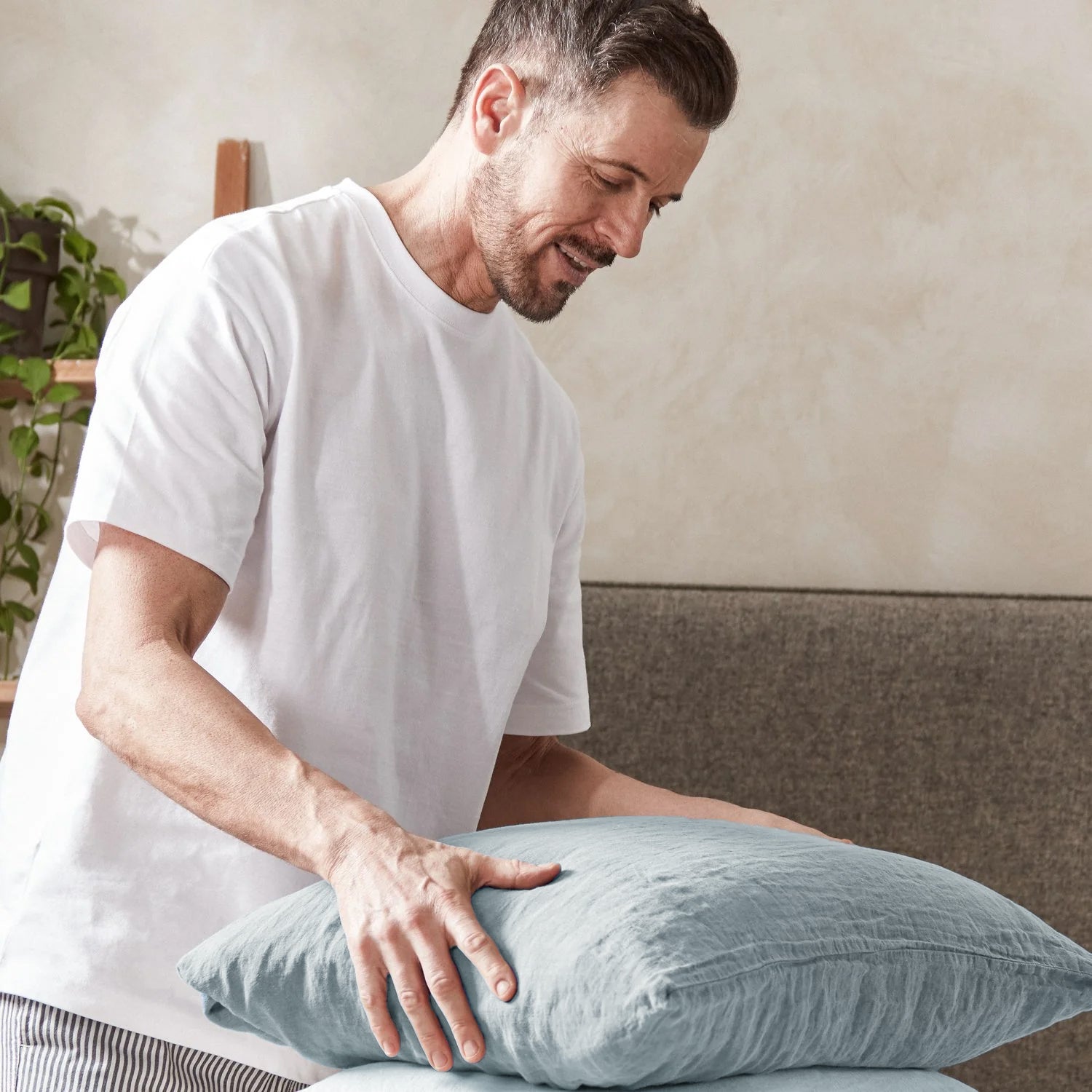Key Takeaways
- Wool naturally balances temperature and wicks moisture, which makes it an ideal material for mattresses.
- Because it’s hypoallergenic and resistant to dust mites and other allergens, wool mattresses contribute to a cleaner, healthier sleep space.
- Wool is also the responsible choice—it’s eco-friendly, renewable, biodegradable and durable
It’s not always easy to pinpoint why we aren’t sleeping well, but it’s worth considering the low-hanging fruit first: your choice of bedding. If you’re falling onto a mattress, pillow and comforter made with synthetic materials night after night, there’s a very real possibility that your sleep issues are related. Fortunately, this is a sleep woe that can be remedied, and it begins with understanding the facts about organic materials for healthier bedding. Case in point? Wool! Thanks to its innate characteristics, wool is truly unrivaled in bedding, from mattresses to pillows to comforters. Let’s review the benefits of sleeping on wool and why it’s the natural choice for healthier sleep.
Why Choose a Wool Mattress?
If your experience with wool is limited to socks and sweaters, you may already be familiar with the fiber’s impressive ability to regulate temperature and wick moisture. Those are standout features for anything to do with bedding. After all, managing temperature is one of the tenets of sleep hygiene, and overheating at night is far more common than not—which means you need bedding materials that aren’t going to make a bad situation worse.
So, why wool instead of, say, polyurethane foam? Good question!
Wool Regulates Temperature and Wicks Moisture
Every night in your bed, you’re dealing with something called the thermal environment—and it can make or break your ability to snooze peacefully. Basically, the goal is to create a sleep environment that’s neither too hot nor too cold. Just like Goldilocks, you need a bed that’s justright. And when you’re sleeping on a wool mattress, that’s what you’re getting. Wool is a natural fiber harvested from sheep, and it has a unique structure. It’s crimped—kind of curly and springy. When it’s used in a mattress, the structure of these individual fibers form miniscule air pockets that insulate for warmth. That’s what keeps you feeling cozy. But unlike polyurethane foam, memory foam and even down, wool is naturally breathable, so it doesn’t trap that heat. Trapped heat and poor breathability are what contribute to overheating and night sweats (a situation best avoided for restful sleep).
On the flip side is wool’s ability to keep you cool. While we sleep, our body temperature naturally fluctuates as part of its ability to thermoregulate. It’s a good thing—unless you’re sleeping on a mattress that holds onto heat and moisture, which can directly interfere with your body’s natural processes. Even if you don’t notice it, your body is releasing some amount of moisture at night, and unless it’s wicked away, you’re likely to wake up soggy and overheated. Wool has a pretty uncanny ability to absorb moisture, locking it away in the fiber. In fact, wool can hold up to 30% of its own weight in moisture without feeling wet or heavy. Then it releases that moisture into the air. As it evaporates, it creates a cooling effect. When it’s hot, that helps cool you down. When it’s cold, staying dry wards off clamminess and chills. Between its dual abilities to regulate temperature and moisture, wool really is the ideal fiber for bedding, mattresses included. And since its very structure promotes airflow, wool mattresses never get stuffy either. They just feel fresh.
Wool is Hypoallergenic and Dust Mite Resistant
Anyone who deals with allergies knows the misery of congestion, itchy eyes and a perpetually runny nose. Bad news—the wrong mattress can make these symptoms worse. Synthetic materials in a mattress contribute to poor breathability, which creates a warm, moist environment that’s incredibly inviting to allergens like dust mites, mold and bacteria. Plus, these materials have a dense structure that holds on debris. Some petroleum-based materials, like polyurethane and memory foams, are also prone to off-gassing. They release volatile organic compounds (VOCs), that can further irritate allergies and asthma.
Once again, wool is an appealing alternative. Its moisture-wicking trick means the environment isn’t conducive to dust mites, mold and bacteria, because it doesn’t stay warm and wet. In fact, wool mattresses tend to be too dry and breathable for dust mites and other allergens to thrive.
While wool is naturally hypoallergenic, finishing treatments associated with conventional wool processing can be problematic for people with allergies. Here at Woolroom, we’re committed to natural wool bedding that’s ethically harvested and responsibly produced. That means partnering with farms that share our values, transparency throughout our supply chain, and natural processing methods for the safest, cleanest wool bedding.
Wool is Eco-Friendly and Sustainable
Just because a fiber is natural doesn’t mean it’s renewable or sustainable. But wool is all three. Every year, sheep produce a new fleece. It’s what keeps them warm during the cold months. When the weather warms, shearing sheep helps them stay comfortable. All of the wool in our bedding comes from British farms who are committed to the highest standards of animal welfare. Our partner farms abide by the five freedoms in the UK Animal Welfare Act of 2006, and with our Wool ID program, all of our wool is traceable back to the farm and even the sheep from which it’s sourced.
Part of wool’s sustainability factor relates to it being both biodegradable and recyclable. Pure wool will naturally break down in soil, releasing nutrients and zero harmful residue. But its durability means it can be recycled again and again—in fact, it’s been described as the world’s most recycled fiber.
The Best Mattress for Your Sleep Needs
While individual sleep needs vary, depending on factors like your preferred sleep style and body type, we all benefit from mattresses that regulate temperature, wick moisture, promote airflow and minimize exposure to toxins and allergens. In other words, wool is a great choice for every sleeper. But finding the perfect wool mattress takes a little thought. Here’s what to keep in mind.
Firmness
People often confuse firmness with support, but they aren’t the same thing. Firmness describes how the mattress feels when you lie on it, and that can vary depending on your body type. Support refers to how well a mattress maintains a healthy posture and neutral spine. The goal is always a mattress with enough support to maintain a neutral alignment, however you sleep.
Sleeping Position
Being mindful of your preferred sleep style can steer you toward a mattress with appropriate support. Back sleepers tend to do best on medium-firm mattresses to ensure proper alignment. Side sleepers often find that a softer mattress does the trick, without putting undue pressure on the hips and shoulders. Stomach sleepers usually need a firmer mattress to keep the hips elevated and the spine straight.
Construction
Here at Woolroom, our natural wool mattresses have a hybrid construction that combines layers of traceable wool with coils for stable support. Our Hybrid Latex Wooly Mattress also includes a Talalay latex layer, which adds exceptional pressure relief and a gentle buoyancy.
Budget
Natural mattresses tend to cost more than their synthetic counterparts, but they last much longer. Most bed-in-a-box polyurethane mattresses have a lifespan of around seven years. The average wool mattress can be expected to perform well for 10 to 20 years, and even longer in some cases. That means fewer replacement costs and a significantly lighter toll on the environment.
The Bottom Line
If you aren’t sleeping well, your bedding could be the simplest place to start making a change—and wool offers a natural solution that truly delivers. With its ability to regulate temperature, wick away moisture, resist allergens, and support eco-friendly living, wool outperforms synthetic materials in almost every way that matters for your sleep and health. Whether you’re a side sleeper who needs pressure relief or a hot sleeper desperate for cooling comfort, a well-made wool mattress can adapt to your body’s needs while promoting a cleaner, healthier sleep environment. Investing in wool isn’t just a choice for comfort—it's a commitment to better sleep, better health and a better planet. And at Woolroom, we make it easy.
Frequently Asked Questions
What are the benefits of a wool mattress?
As a fiber, wool is naturally temperature regulating and moisture wicking, so it helps manage natural temperature fluctuations as you sleep. It naturally deters allergens and dust mites, which makes for a cleaner, healthier sleep space. Plus, natural wool is biodegradable and sustainable.
Are wool mattresses good?
Wool mattresses are a great option for cleaner, more restful sleep. As a fiber, wool regulates temperature and wicks moisture to keep you comfortable and dry. It resists dust mites and allergens, and it’s an eco-friendly choice. Plus, wool is incredibly durable, so it outlasts mattresses made with synthetic materials.
What mattress is the healthiest to sleep on?
The healthiest mattresses are made from natural, non-toxic materials like wool and latex. These materials regulate temperature, breathe well, wick moisture and resist allergens, including dust mites and mold. Unlike synthetic materials, natural mattresses don’t off-gas or trap heat and moisture.


